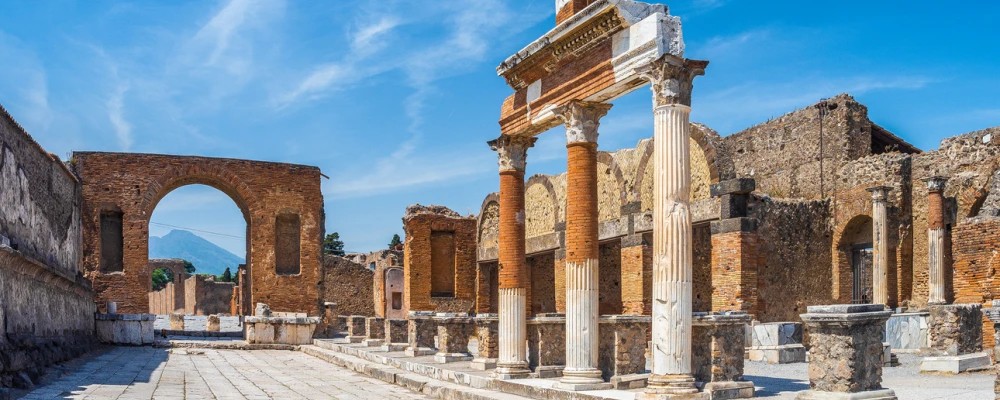The dream of creating a living, breathing virtual world is one of the most powerful motivators in the gaming industry. The promise of a Massively Multiplayer Online Role-Playing Game (MMORPG) is immense: a persistent universe where thousands of players can forge legends, build communities, and embark on endless adventures. Yet, for every tale of a triumphant, long-lasting world, the annals of gaming history are filled with the ghosts of failed projects and shuttered servers. Recent Gaming News continues to highlight this brutal reality, as even the largest corporations with seemingly limitless resources are forced to cancel ambitious projects and scale back support for existing titles. This high-stakes environment raises a critical question: in an era of diverse entertainment options, why is successfully launching and maintaining a AAA MMORPG one of the most difficult and financially risky endeavors in all of entertainment?
This article delves into the complex technical, financial, and cultural challenges that define modern MMORPG development. We will explore the monumental task of building these digital worlds, analyze why so many have failed, learn from the titans that have endured, and look toward the future of the genre. From engine architecture to community management, we will dissect what makes the MMORPG the ultimate gamble in the world of Video Games.
The Monumental Task: Deconstructing MMORPG Development
Creating a single-player AAA game is already a colossal undertaking, but developing an MMORPG multiplies that complexity exponentially. It isn’t about building a finite experience but rather a perpetual service—a digital world that must function, entertain, and evolve 24/7 for a global audience. This requires a fusion of cutting-edge technology, massive content creation, and rock-solid infrastructure that pushes the boundaries of modern Game Development.
The Technical Foundation: Engine and Infrastructure
At the core of any MMORPG is its game engine and the server architecture that supports it. Developers face a crucial choice: build a proprietary engine from scratch or license a powerful, versatile one like Unreal Engine. While the latest Unreal Engine News often showcases stunning graphical fidelity perfect for cinematic RPG Games, adapting it for the “massively multiplayer” component is a Herculean task. An engine must be optimized to render dozens, sometimes hundreds, of player characters on screen simultaneously, each with their own animations, effects, and gear, without crippling the performance of a user’s Gaming PC or console.
Behind the scenes, the server infrastructure is even more complex. A world cannot exist on a single machine; it requires a distributed network of servers handling everything from player location and combat calculations to inventory management and social interactions. Developers must implement solutions like “sharding” (creating multiple copies of the world to divide the player base) or “layering” (stacking instances of zones on top of each other) to manage population density. The netcode must be impeccably optimized to minimize latency, as a half-second delay can be the difference between a successful raid boss kill and a frustrating wipe for a party of 40 players. This backend technology is the unsung hero of any successful MMO, requiring a level of engineering far beyond that of typical FPS Games or single-player adventures.
The Content Treadmill: Building a World, Not Just a Game
The single greatest challenge facing any MMORPG is the relentless demand for new content. Unlike a game you finish in 40-60 hours, an MMO is expected to provide hundreds, if not thousands, of hours of engagement. This “content treadmill” is a voracious beast that must be fed constantly. At launch, a AAA MMORPG is expected to have a sprawling world, a compelling main story, hundreds of side quests, multiple dungeons and raids, intricate crafting systems, PvP battlegrounds, and robust social features. This alone can cost hundreds of millions of dollars and take the better part of a decade to develop.

The real challenge, however, begins after launch. The Gaming Community consumes content at a blistering pace. A raid that took months to design might be conquered by top guilds within days of its release. To keep players subscribed and engaged, the development team must operate like a live television studio, constantly producing new “episodes”—patches, expansions, and seasonal events. This requires a massive, permanent staff of artists, designers, and engineers, making the long-term operational costs of an MMORPG astronomical compared to other genres in the Gaming Industry.
Echoes in the Void: Why So Many MMOs Fail
The road to MMO success is narrow and treacherous, and the landscape is littered with the wreckage of ambitious projects that failed to find their footing. Understanding these failures provides a crucial lesson in game design, market realities, and community management. Many of these fallen giants made similar, often predictable, mistakes.
The “WoW Killer” Fallacy
For over a decade following the launch of World of Warcraft, a recurring theme in MMORPG News was the announcement of the next “WoW Killer.” These were games, often backed by massive budgets, that aimed to replicate WoW’s success by offering a similar but “better” experience. This strategy was almost universally a recipe for disaster. By inviting direct comparison, these games set impossibly high expectations and often launched with less content and polish than the genre titan they sought to dethrone. They failed to understand that players weren’t just invested in WoW’s mechanics but in its world, its community, and the years of memories they had built. A successful MMO cannot simply be a clone; it must offer a unique identity and a compelling reason for players to abandon their established digital lives. The market has also fragmented significantly; players today split their time between a variety of genres, from MOBA Games like League of Legends News and Dota 2 News to competitive shooters like Valorant News and Counter-Strike News, making it harder than ever to command their undivided attention.
Monetization Models and Player Burnout
How a game makes money is intrinsically linked to its design and community health. The traditional subscription model, while lucrative, demands a constant stream of high-quality content to justify the recurring cost. The Free-to-Play (F2P) model, popular in Mobile Gaming and many modern MMOs, opens the door to a larger audience but carries the risk of “pay-to-win” mechanics that can alienate the player base. The Buy-to-Play (B2P) model offers a middle ground but still requires a cash shop to fund ongoing development. Finding the right balance is critical. An overly aggressive monetization strategy can breed resentment and be perceived as disrespectful to the player’s time and investment. Similarly, game systems designed to create excessive “grind” to encourage shortcut purchases can lead to rapid player burnout, causing a mass exodus that a new MMO can rarely recover from.
Forging a Legacy: The Secrets to MMORPG Longevity
While many have failed, several MMORPGs have achieved incredible, long-term success. These enduring worlds offer a blueprint for what it takes to not only survive but thrive in this competitive space. Their stories are often ones of adaptation, community focus, and a willingness to make bold, transformative changes.
Case Study: The Power of Redemption and Community Trust

Perhaps the most famous comeback story in Gaming History is Final Fantasy XIV. Its initial 2010 launch was a critical and commercial catastrophe, plagued by poor design, technical issues, and a fundamental misunderstanding of the genre. Instead of abandoning the project, the developer made the unprecedented decision to apologize to its players, keep the servers running while developing a completely new version of the game, and conclude the original storyline with an in-game apocalyptic event. The relaunch, titled “A Realm Reborn,” was a monumental success. The key lesson was the developer’s profound respect for its Gaming Community. They listened intently to feedback, communicated with transparency, and delivered a polished, engaging experience that honored the Final Fantasy legacy. This built a foundation of trust that has allowed the game to grow into one of the most beloved and successful MMORPGs of all time, with a thriving presence on both PC Gaming and Console Gaming platforms.
Case Study: Niche Appeal and Sustainable Design
Not every MMO needs to be a world-conquering behemoth. Games like Guild Wars 2 and Old School RuneScape have found immense success by catering to specific playstyles. Guild Wars 2 pioneered a B2P model and a “horizontal progression” endgame that respected player time, making it easy for people to return after a break without feeling hopelessly behind. Its dynamic event system also fostered a unique sense of cooperative world-building. Old School RuneScape, born from a 2007 backup of the original game, leans heavily into Retro Gaming nostalgia. Its success is driven by a unique governance model where every significant update is polled and must be approved by 75% of the player base, giving the community direct control over the game’s evolution. These examples show that a clear vision and a sustainable design philosophy can carve out a dedicated, long-term audience.
The Horizon Ahead: What’s Next for the MMORPG Genre?
The MMORPG genre is at a crossroads. The era of the traditional “theme park” MMO may be waning, but innovation continues to push the boundaries of what a persistent online world can be. Several key trends are shaping the future of the genre, from technological advancements to fundamental shifts in Game Design.

The Rise of Cross-Platform and Cloud Gaming
The barriers between platforms are crumbling. The future of MMORPGs is cross-platform, allowing players on high-end Gaming Laptops, PlayStation, and Xbox to inhabit the same world. This expands the potential player pool massively but introduces significant technical hurdles in UI design, control schemes (Gaming Keyboards and Gaming Mice vs. Game Controllers), and performance parity across varied Gaming Hardware. Furthermore, Cloud Gaming services are making these graphically intensive games accessible on devices that lack powerful local hardware, like older PCs or mobile phones, promising to bring massive online worlds to an even broader audience.
Genre Blending and the “MMO-Lite”
Many of the most successful online games today are not pure MMORPGs but hybrids that blend MMO elements with other genres. Titles like Destiny 2 (an FPS/MMO), Warframe (a third-person shooter/MMO), and even survival games like Valheim incorporate deep progression systems, social hubs, and instanced group content without the full weight of a traditional MMO’s open world. This “MMO-lite” approach offers a more focused and often more sustainable development model, capturing the satisfying loot and progression loops of an MMO within a different gameplay framework. This trend is likely to continue, with more games incorporating persistent social and progression systems into their core design.
Conclusion
The development of a AAA MMORPG remains the gaming industry’s equivalent of a moonshot—an incredibly expensive, technically demanding, and high-risk venture with a profound chance of failure. It requires more than just a massive budget and a popular IP; it demands a flawless technical foundation, a sustainable plan for a near-endless stream of content, and, most importantly, a deep and abiding respect for the player community. The lessons from past failures and enduring successes paint a clear picture: a unique vision, transparent communication, and adaptable design are the cornerstones of longevity. While the graveyard of ambitious worlds grows larger each year, the dream of creating the next great digital universe will continue to inspire developers. The future of the genre may lie not in replicating the past, but in blending its best ideas with new technology and innovative design to create the persistent online experiences of tomorrow.












